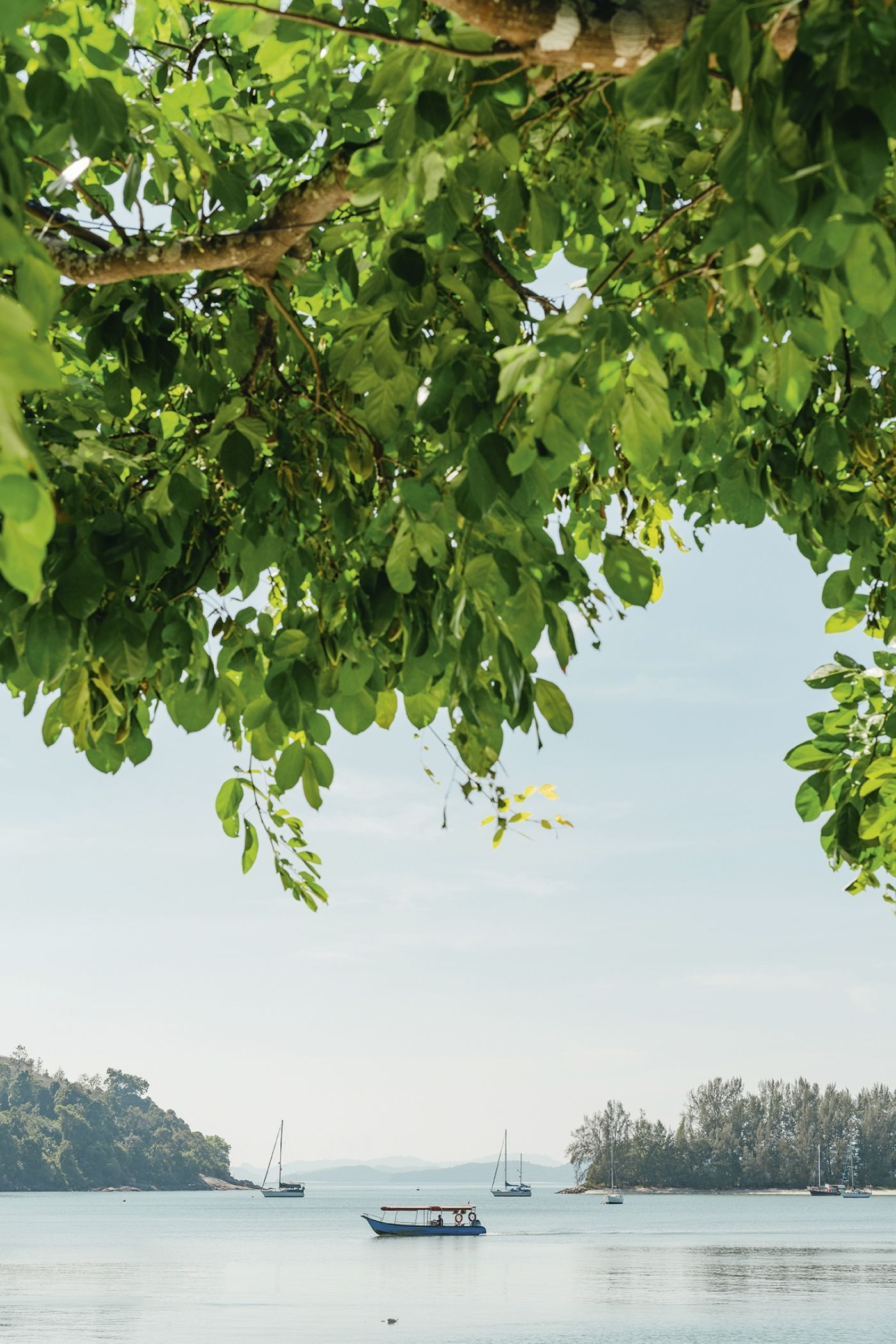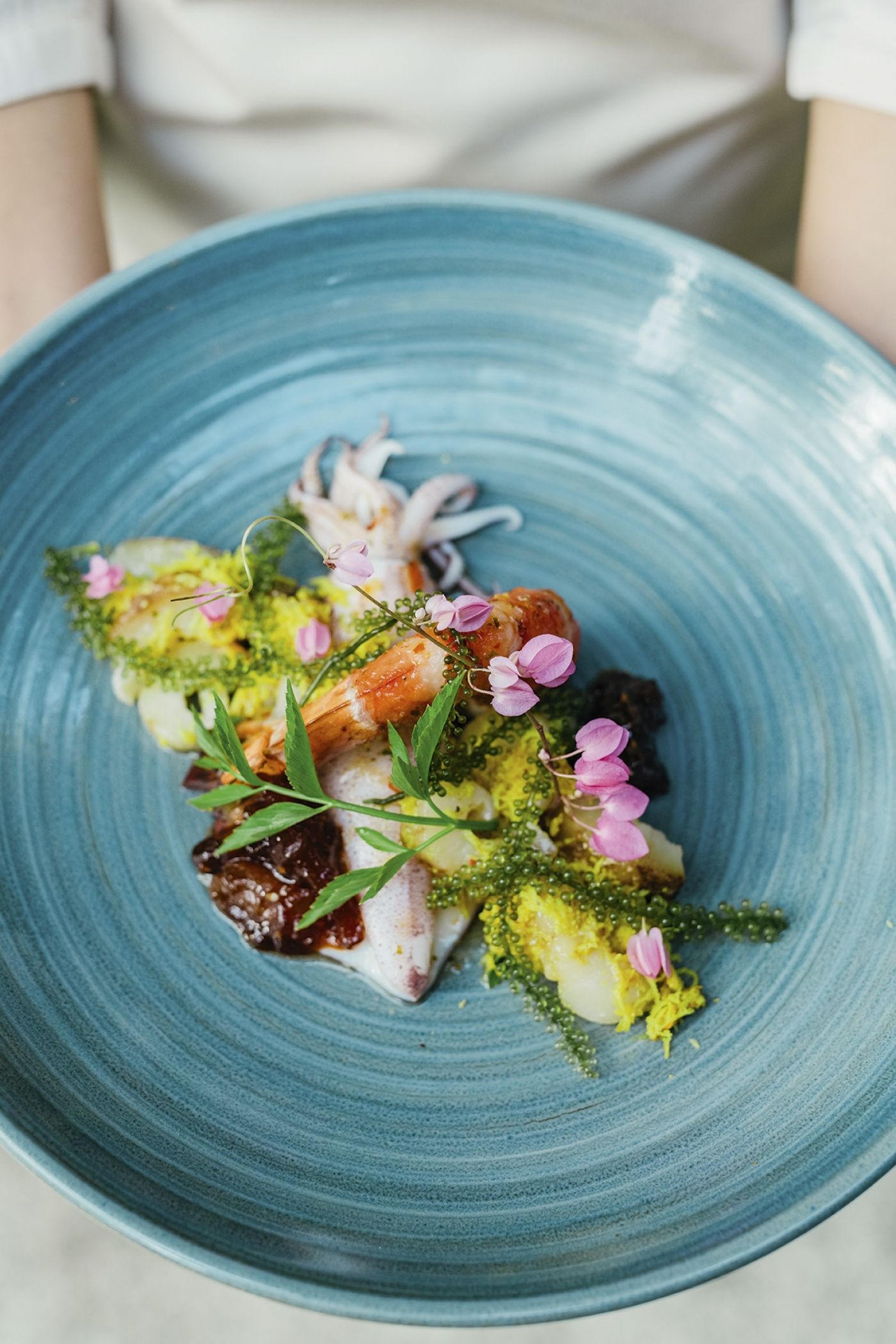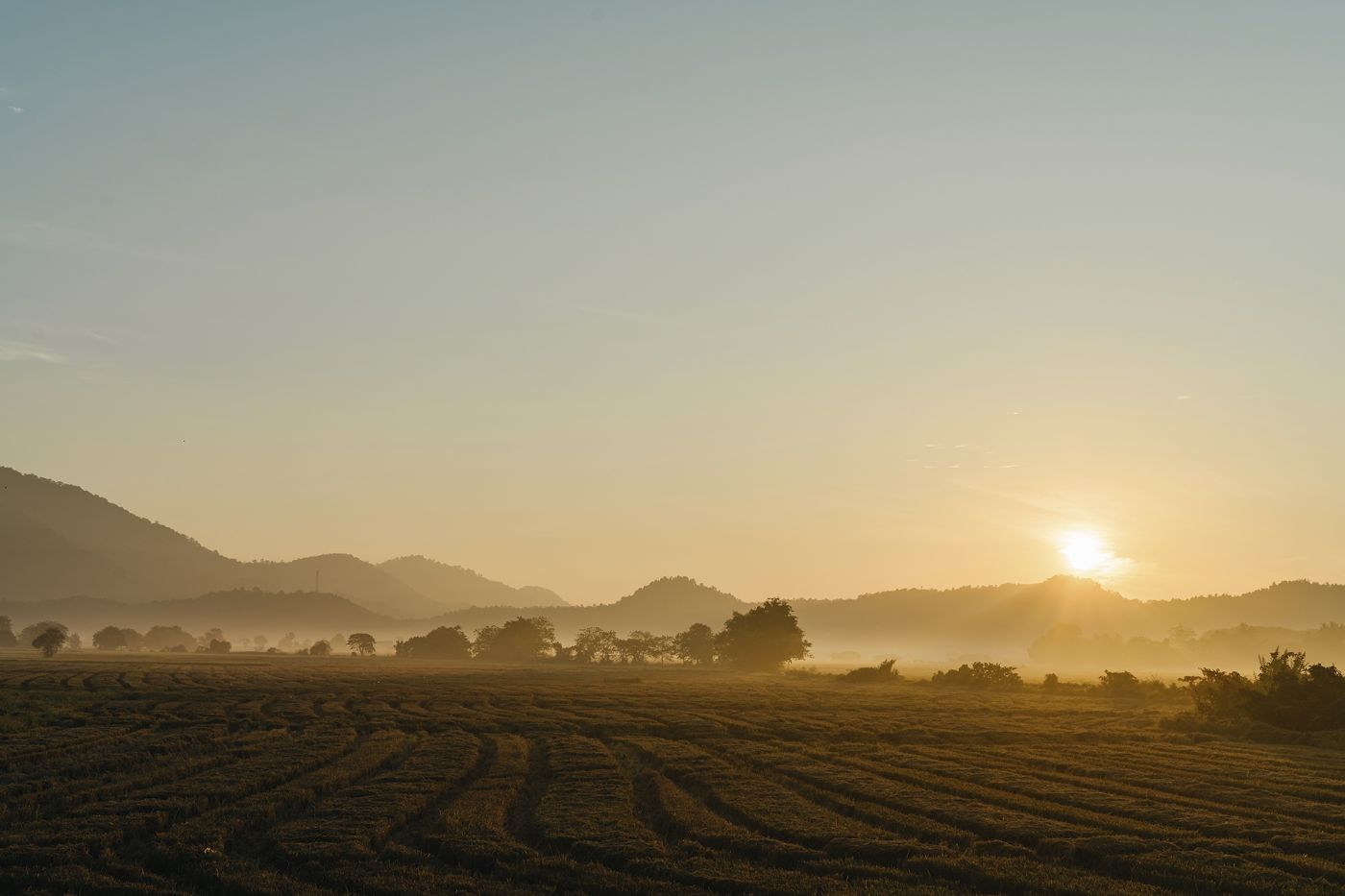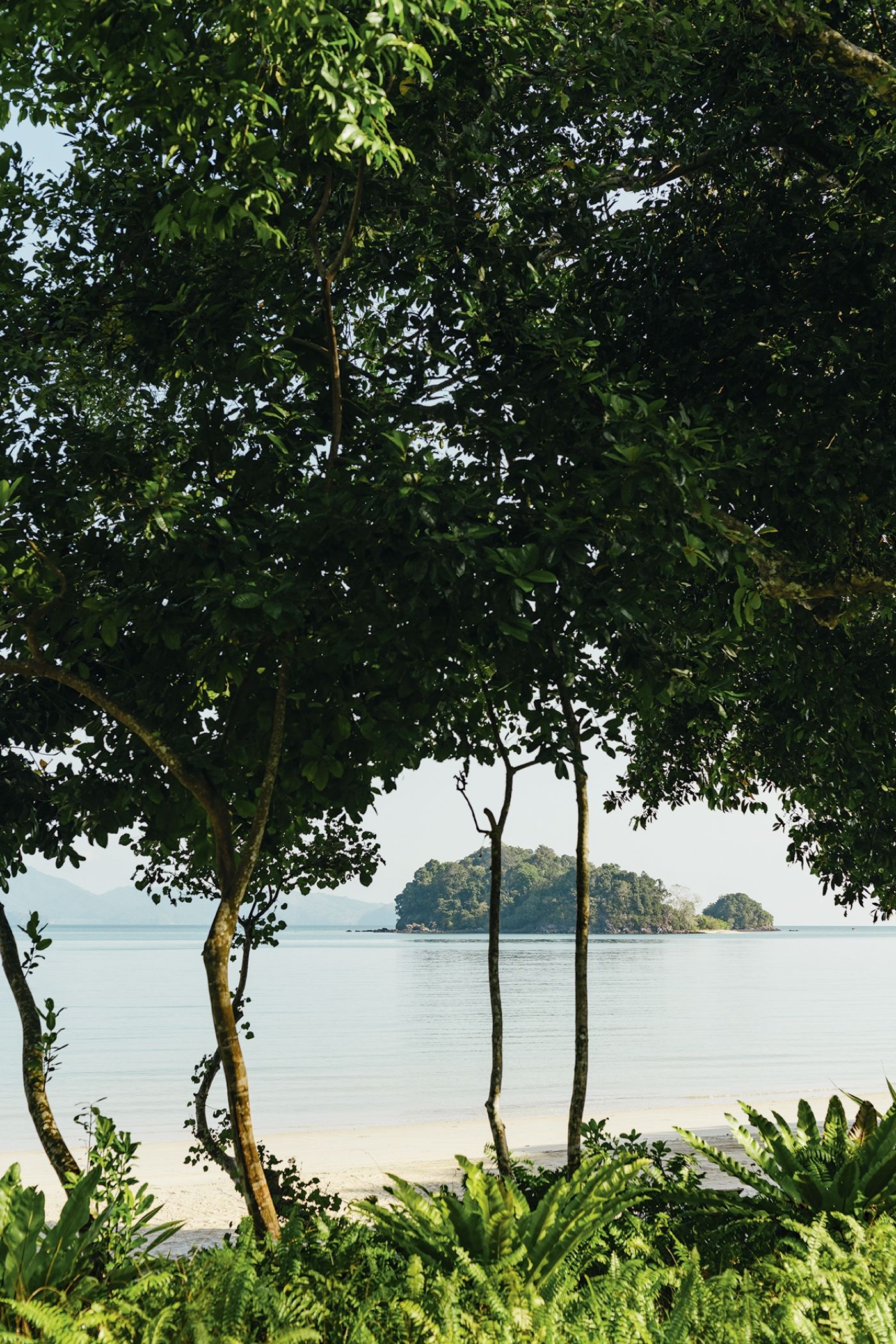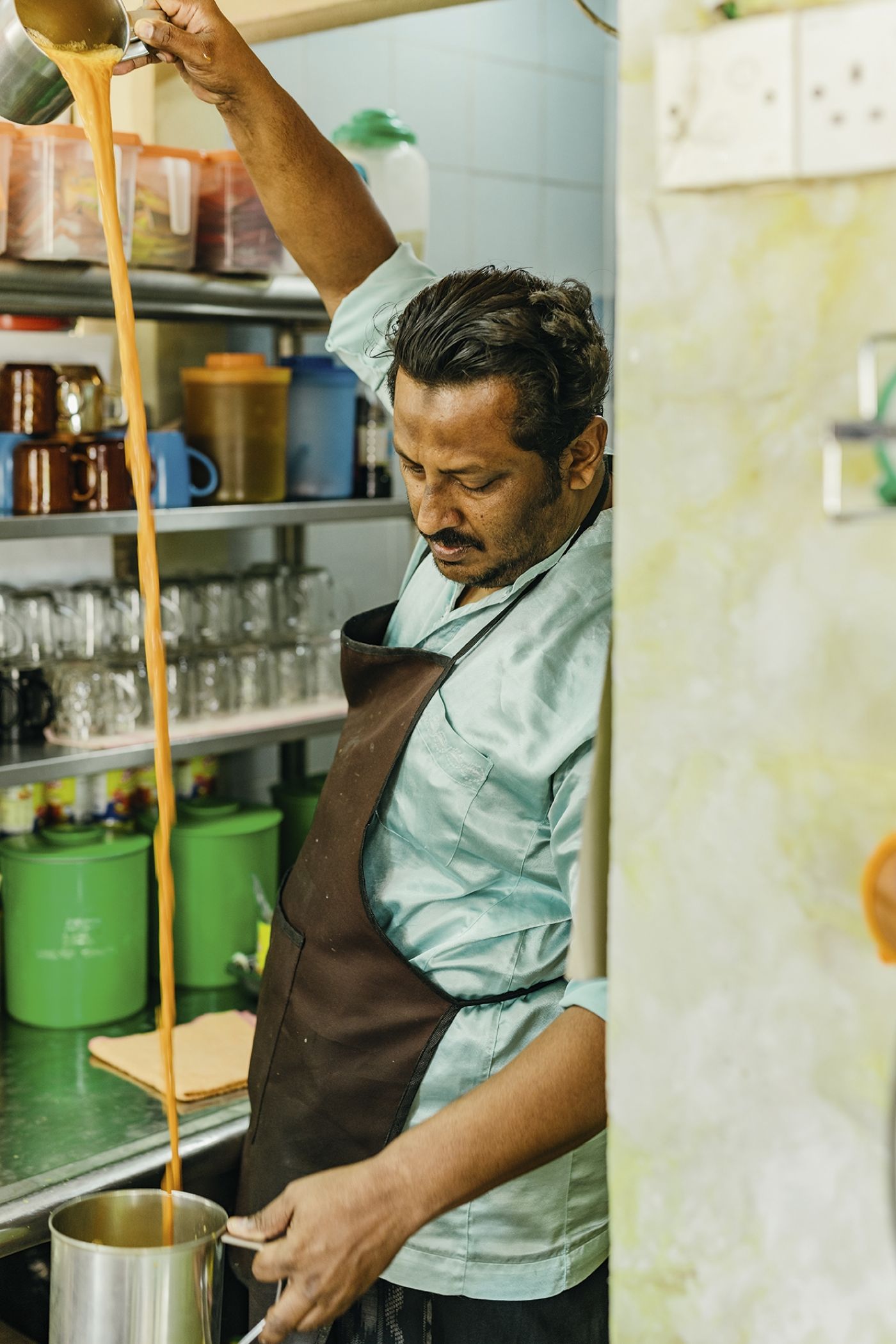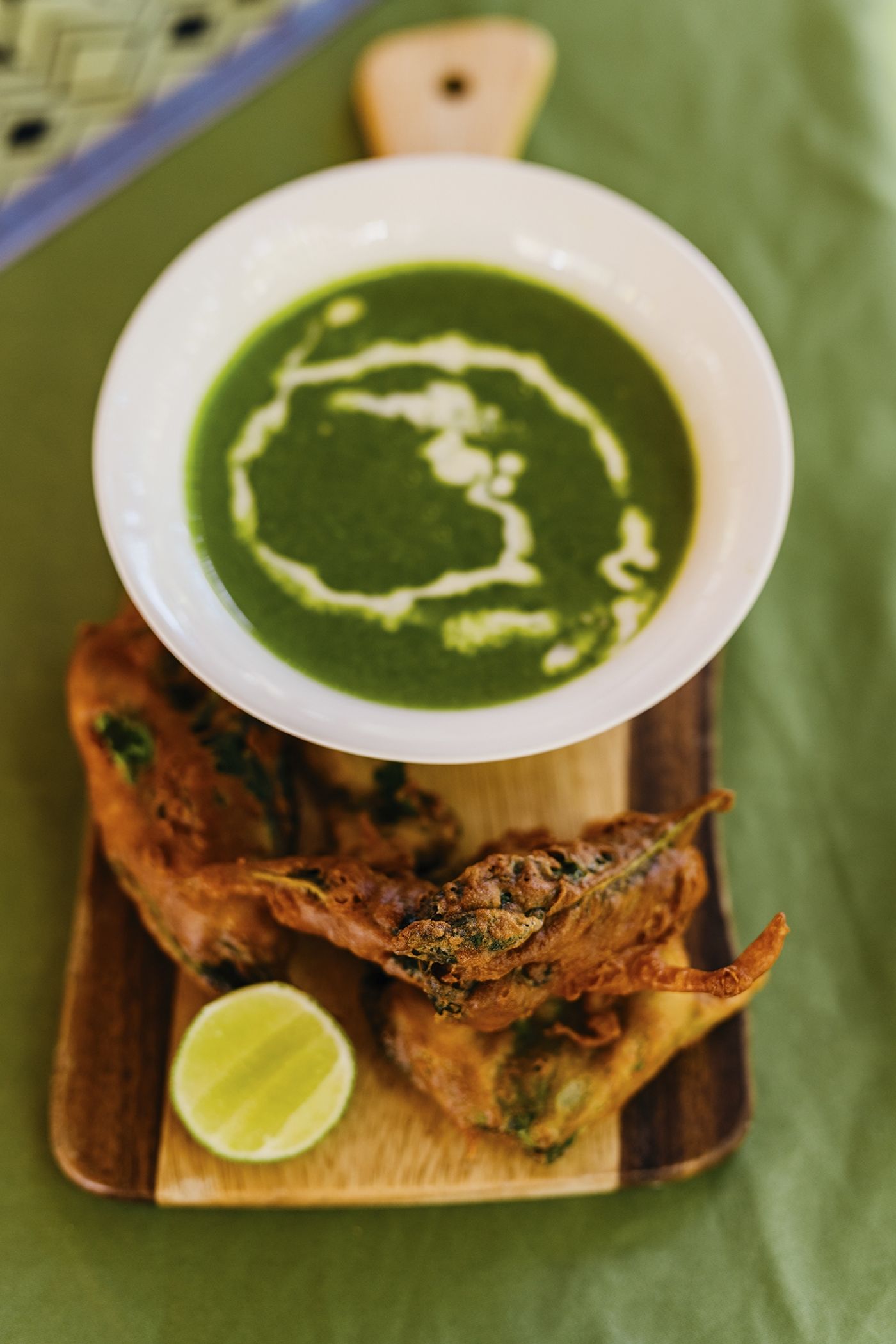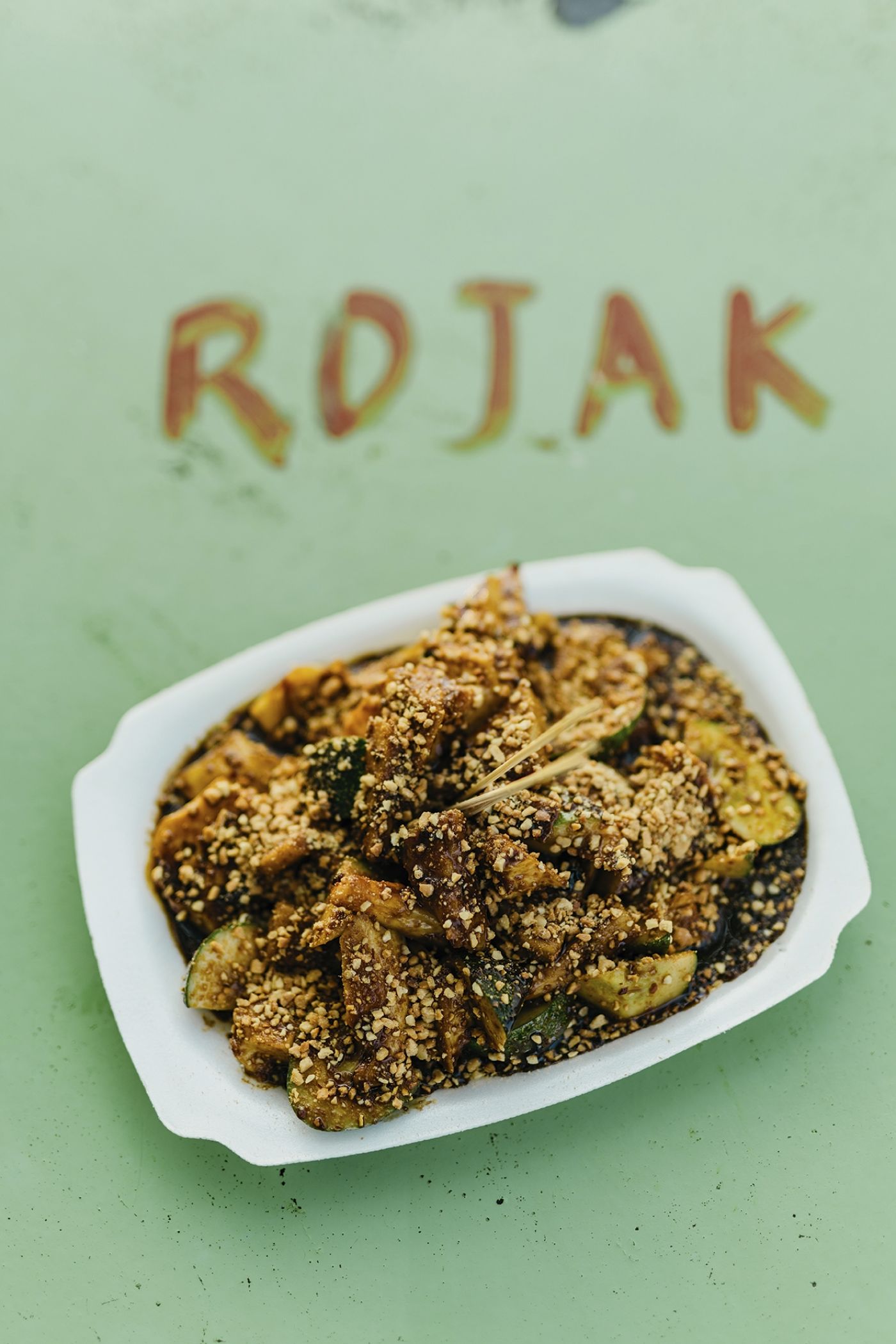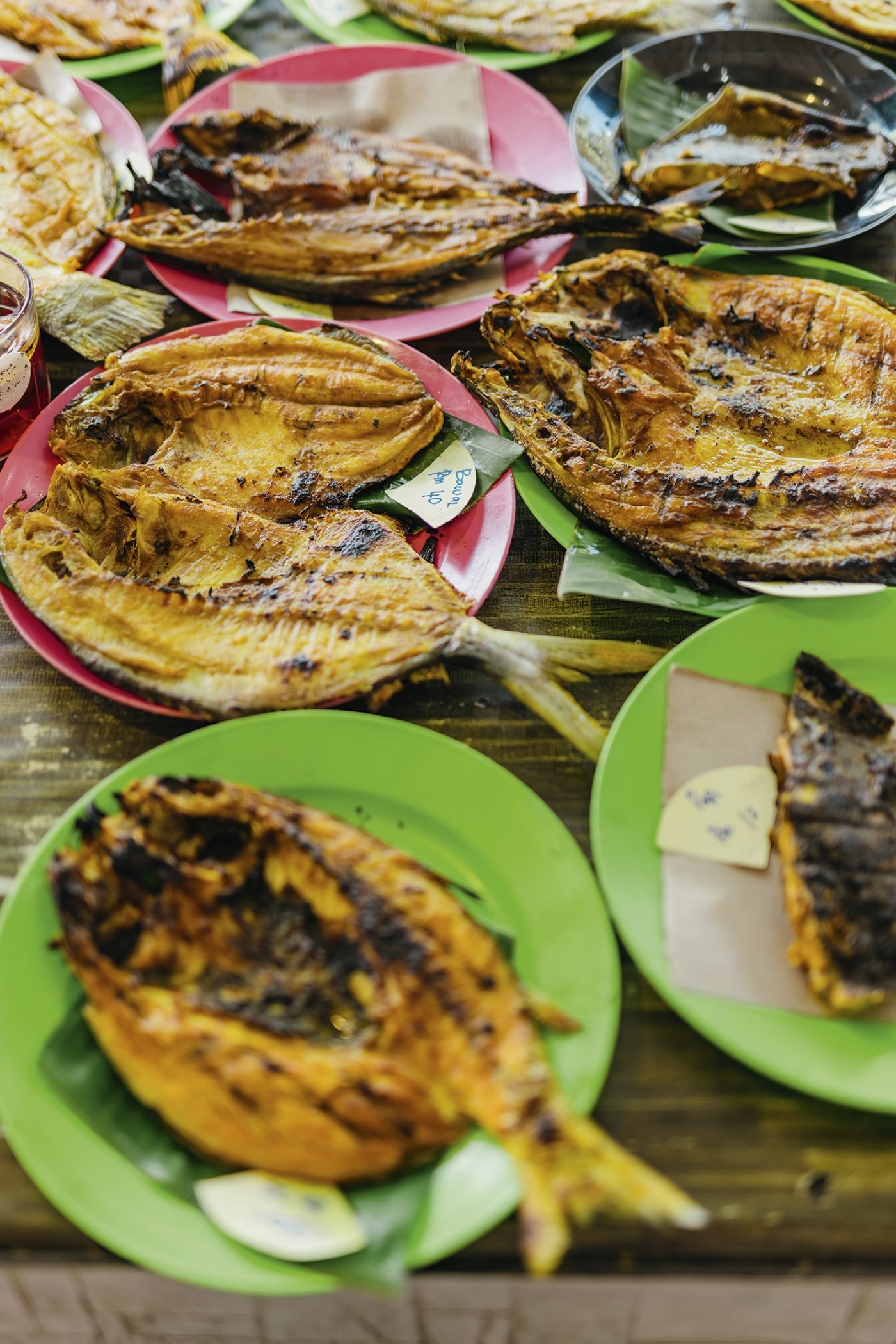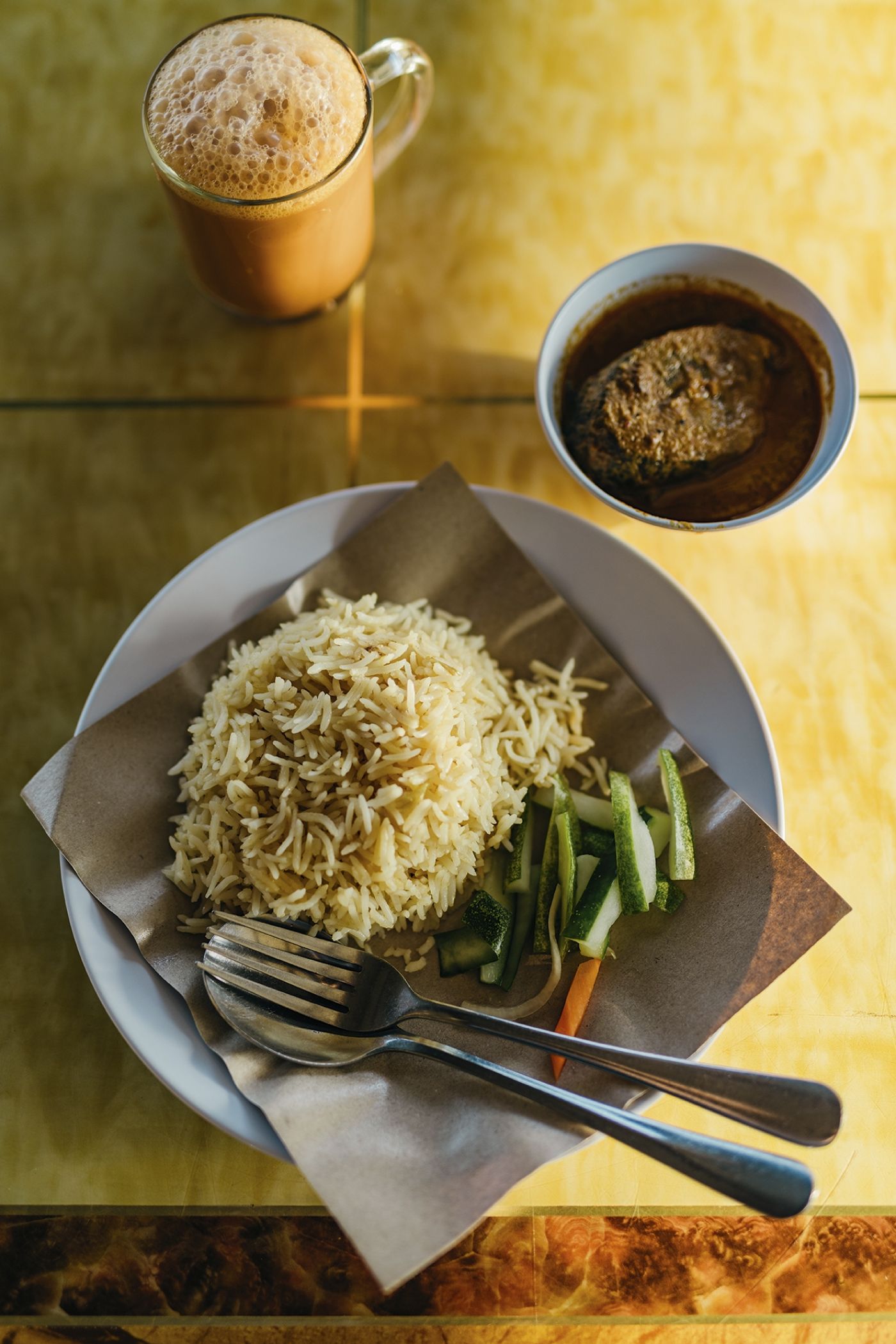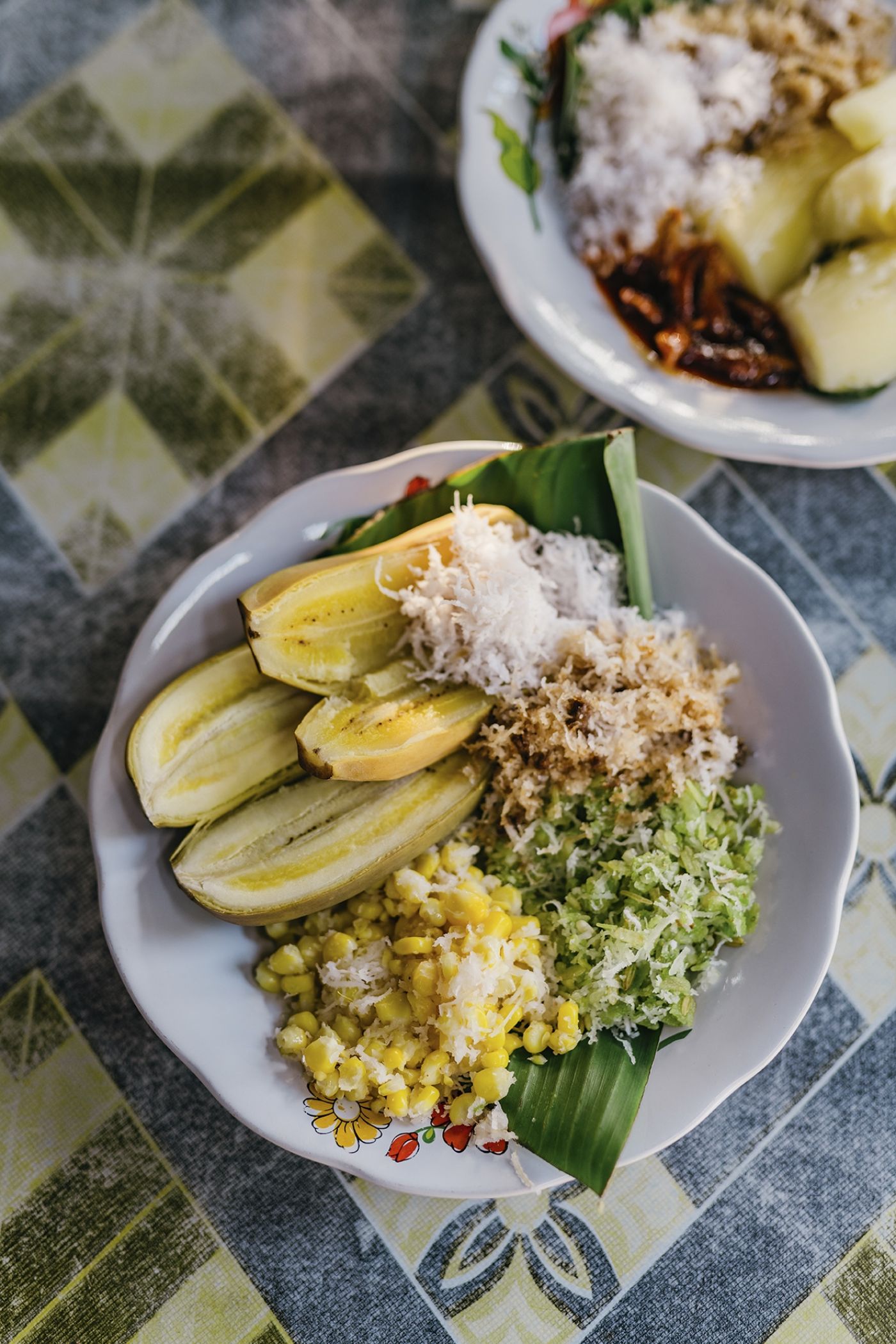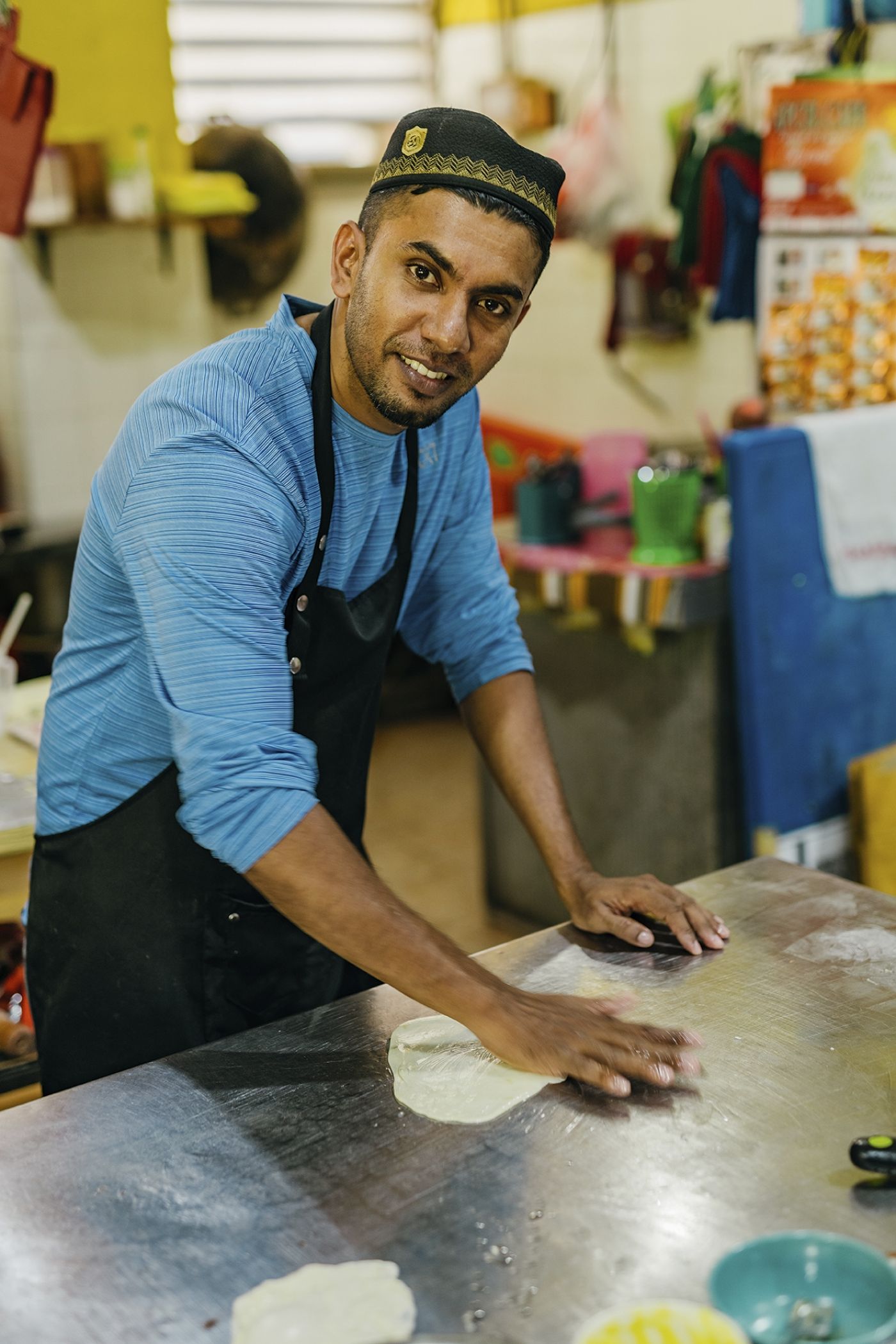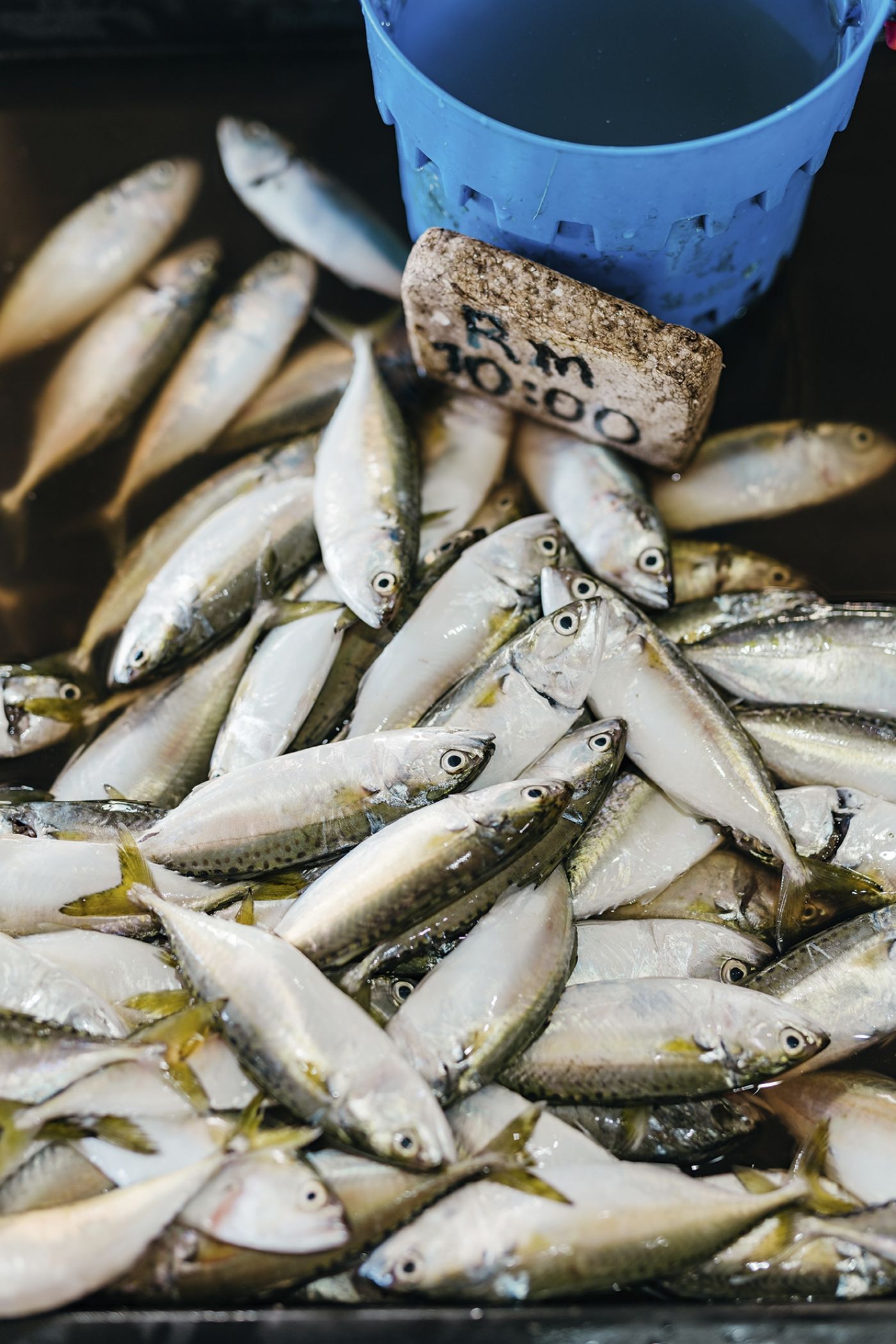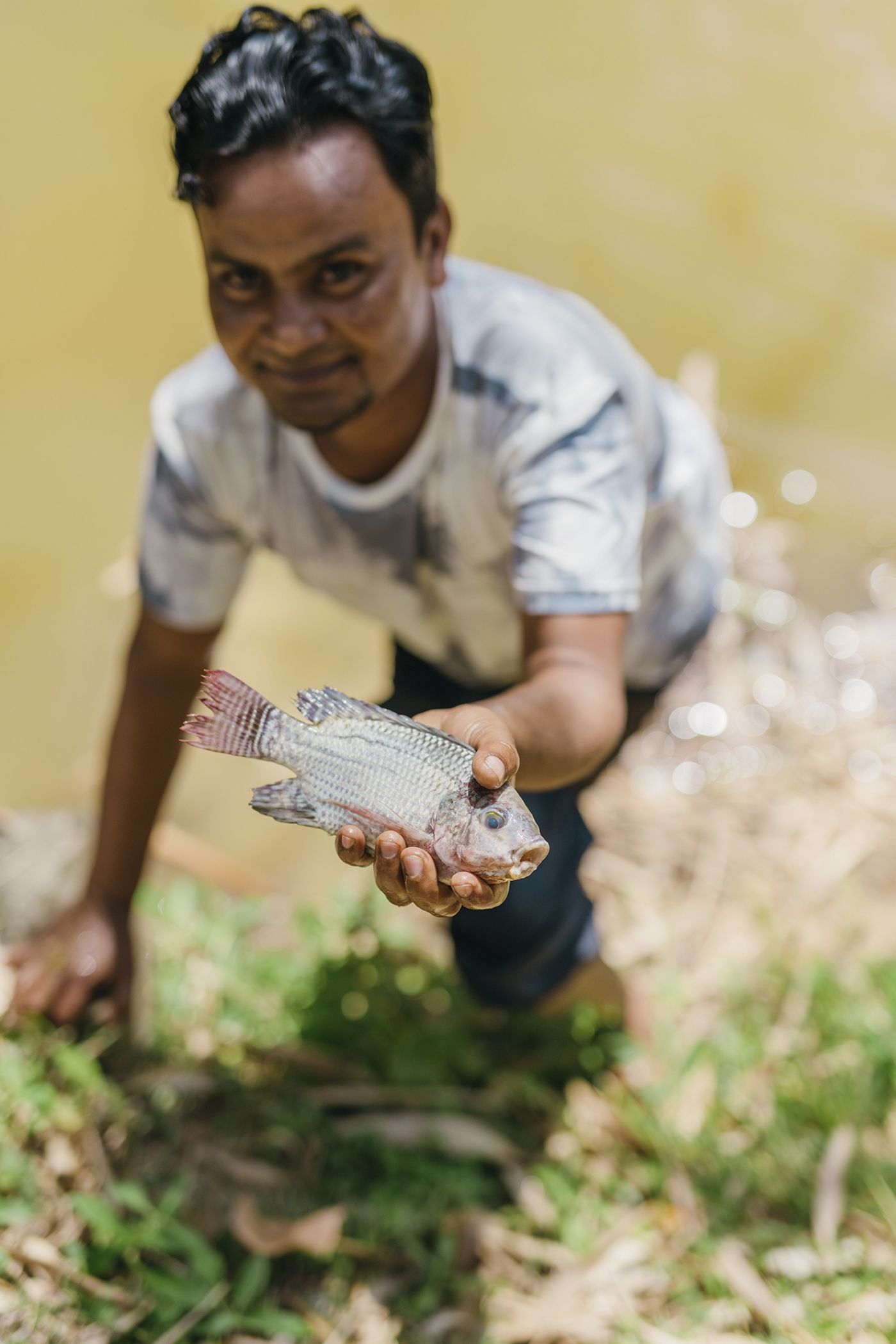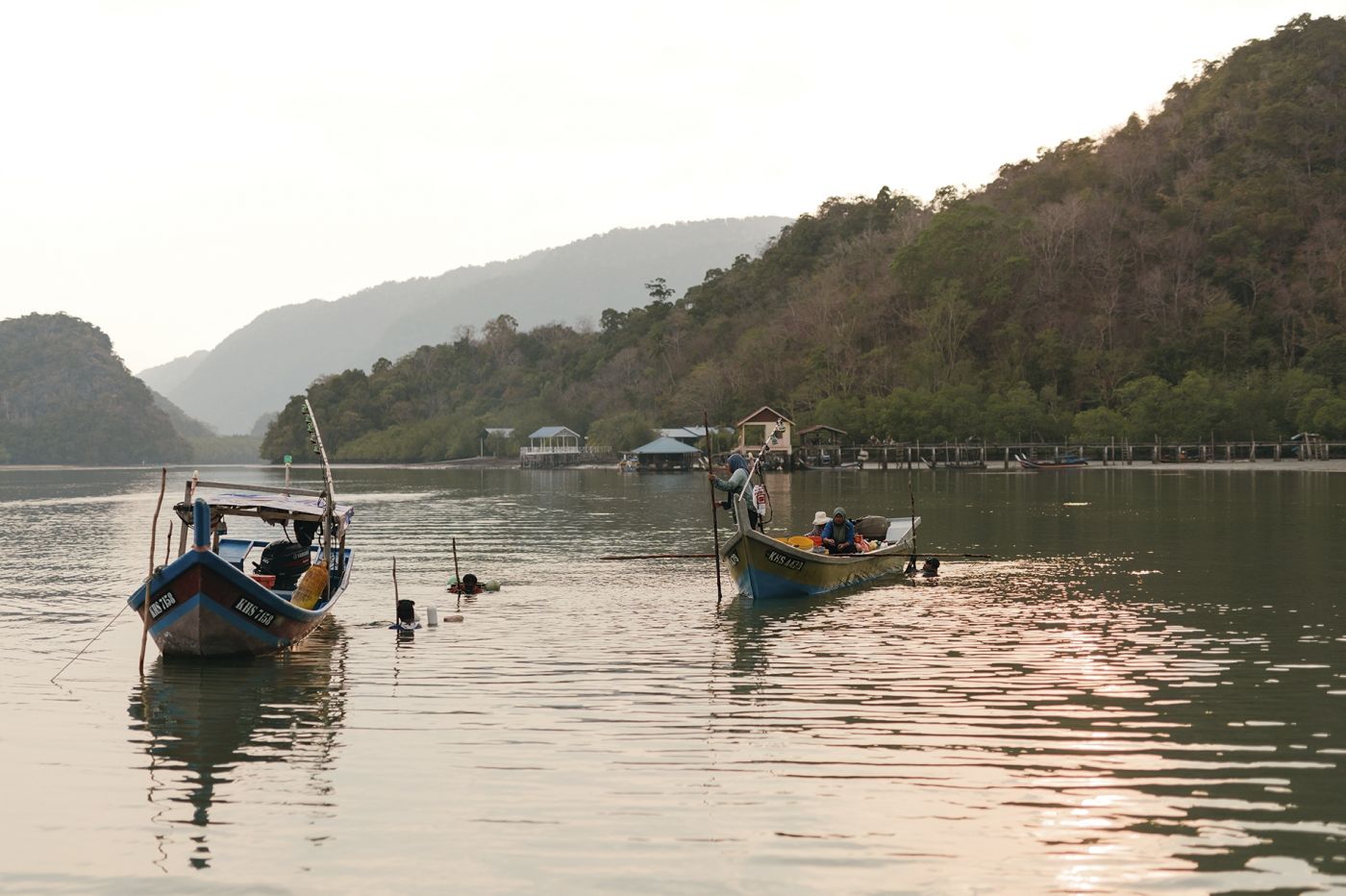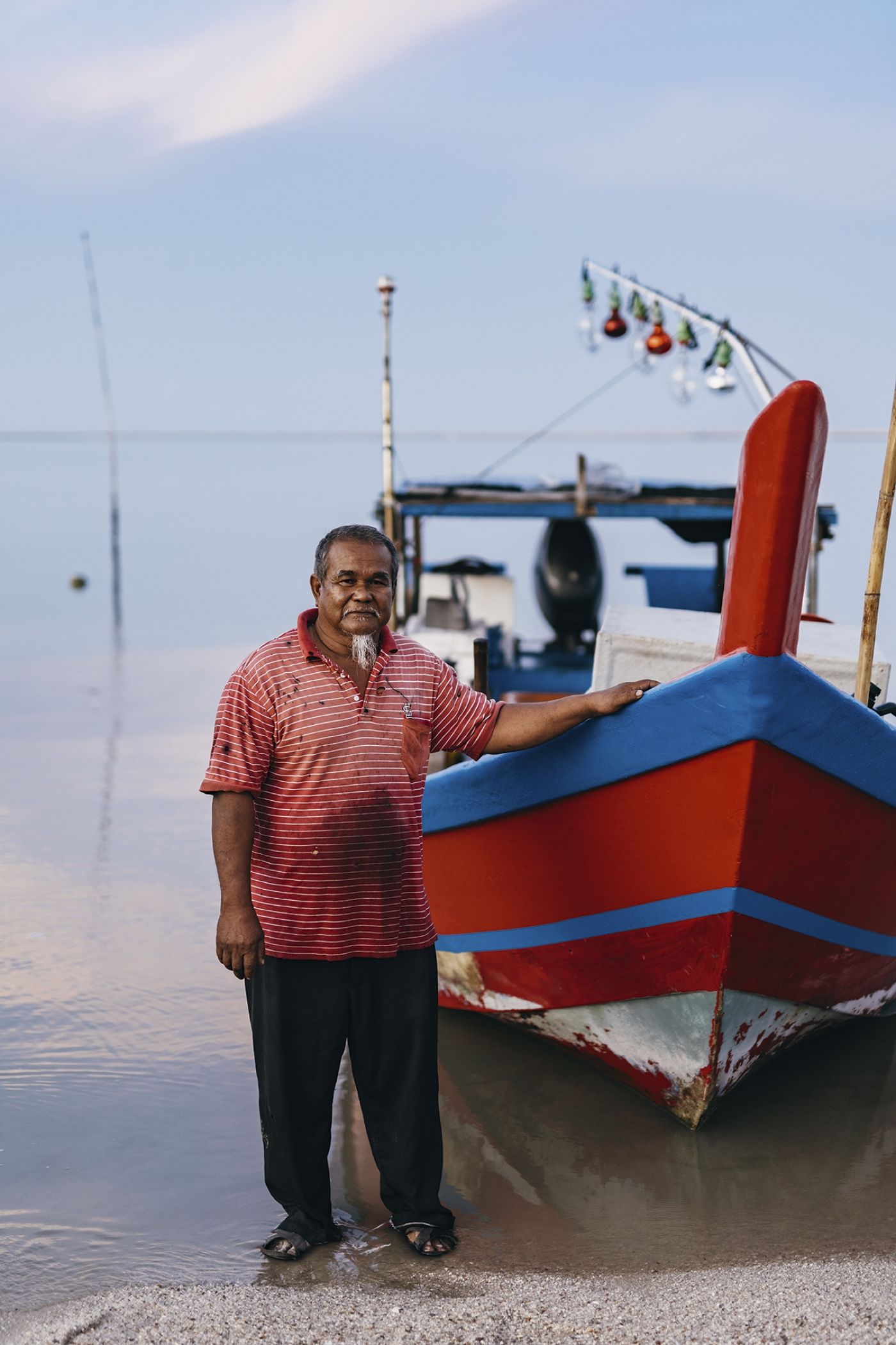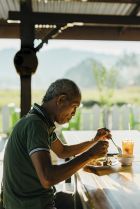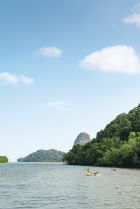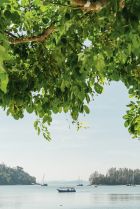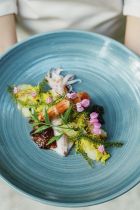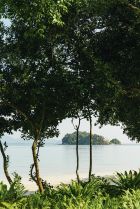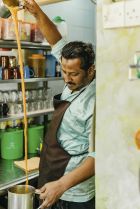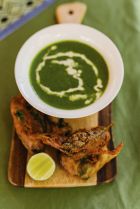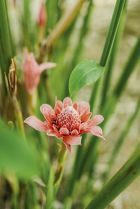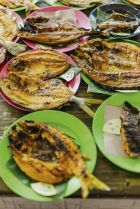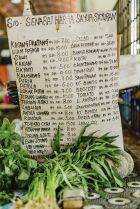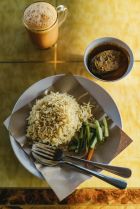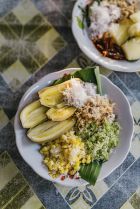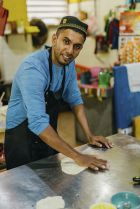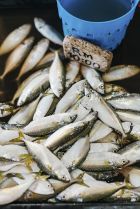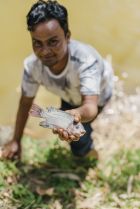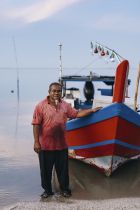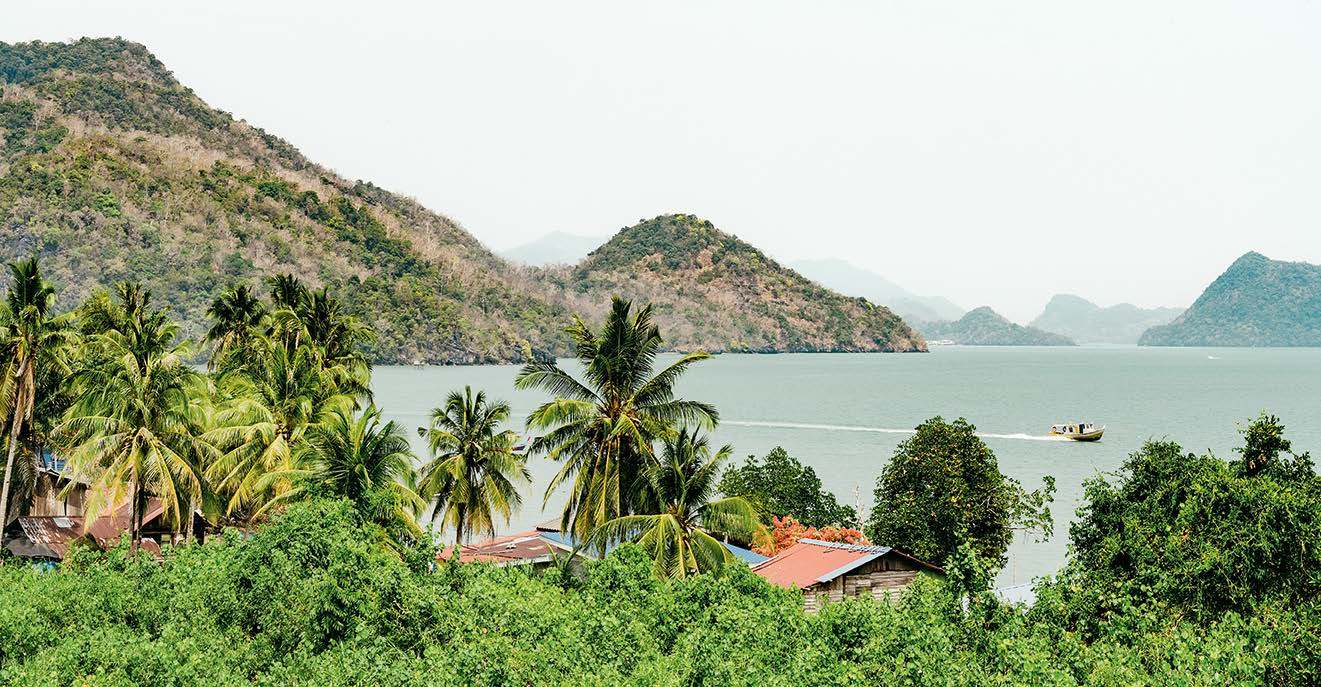
Food and Travel Review
The usual advice issued to anyone scared of heights is 'Don't look down.' A better instruction for those riding the Langkawi SkyCab might be 'Don't look up,' - ascent to the summit of Gunung Mat Chinchang is one of the steepest cable car climbs in the world and, as the gondola glides ever upwards, all one can see is a rock face of sheer limestone rising to 709m above sea level. Turning the other way might offer an equally vertiginous prospect but also allows for a full appreciation of one’s surroundings – not least the fact that Langkawi is not one island but an archipelago of 99 isles strung out off the north-west coast of Malaysia where the Strait of Malacca heads into the Andaman Sea.
Some 65 per cent of Langkawi’s population of 99,000 live on the main island, Pulau Langkawi, but from this mountain vantage point the only thing more vivid than the blue of sea and sky is the deep green of the forest and hills that cover two-thirds of the island, and the paddy fields running through the centre. The main signs of human habitation are the hotels lining the sandy shoreline and the concentration of buildings in Langkawi’s compact capital of Kuah.The mountains were the first part of Southeast Asia to rise from the seabed, some 550 million years ago, and while life in Langkawi has certainly moved with the times, its distance 30km from the Malaysian mainland and the rest of Kedah state has created a distinctly local cuisine.
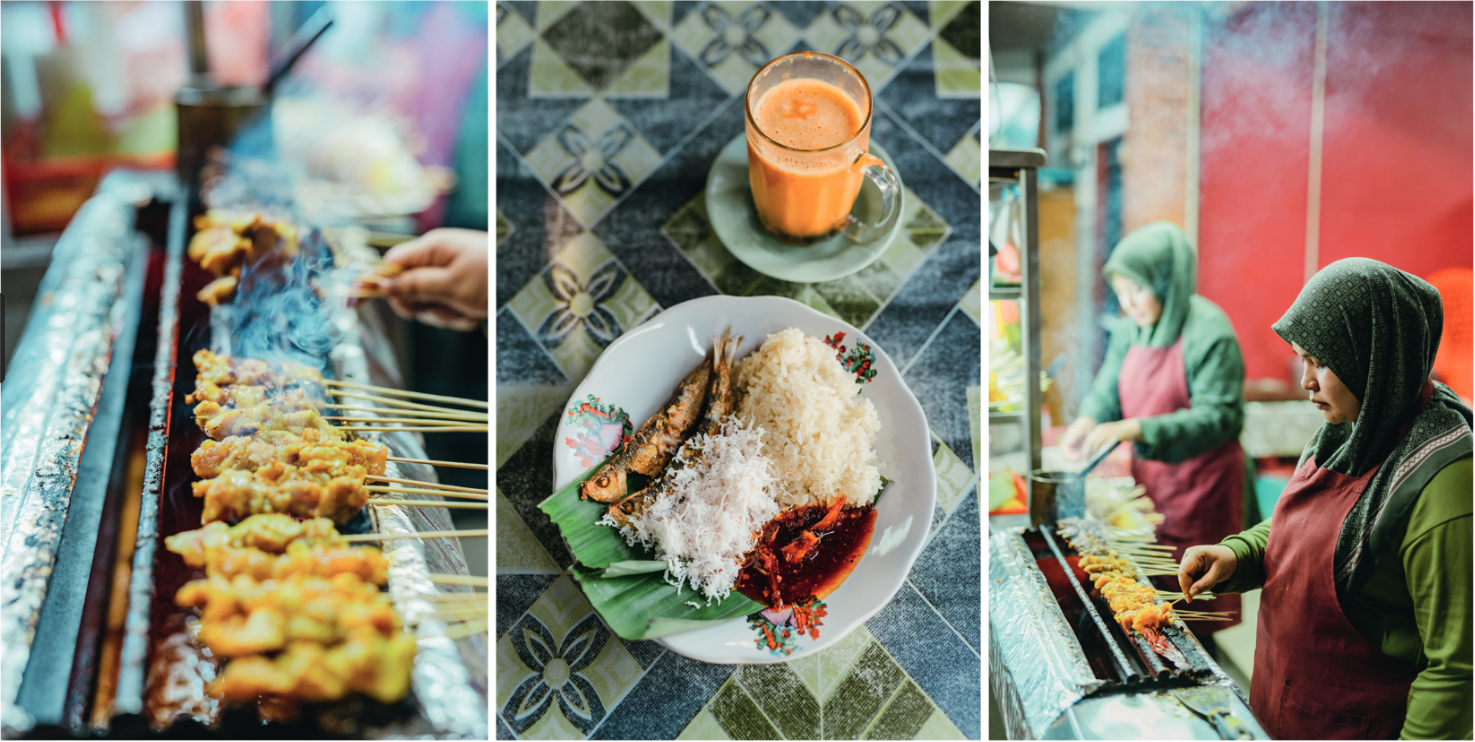
Kuah’s public market, Pasar Awam Kuah – the word pasar in
Malay derives from the word bazaar – is as good a place as any
to get a taste for it. It’s a familiar sight from markets the world
over: women in plain blouses and patterned headscarves, or
plain headscarves and patterned
blouses, browsing the stalls and craning their necks before
deciding who is selling the freshest produce. Skinny little cats
skulk around the floor, hoping to snatch up offcuts while pigeons
flap around the arched ceiling.
The ingredients, though, are specific to Langkawi. A poultry butcher stands behind her counter deftly breaking up a chicken with a cleaver but while there are around 15 meat stalls, there are triple that number of fishmongers – each of whom seems to be selling local squid, heaped in translucent piles like water-soaked tissues. But there is also sweet-fleshed butterfish and horse mackerel from the warm waters surrounding the island. Ask any of the market traders what to do with the produce and the answer is invariably the same: ‘make a curry’.
For that, one must head to the back of the market for some baby watermelon, which tastes of very little but adds texture. There is Malaysia’s version of plantain, pisang tanduk or horn banana, which lends curries a sweet, concentrated flavour. In the street next to the market, Mohammed Syamin starts work at 5am each morning in Yen’s Santan, the shop owned by his mum, feeding Langkawi coconuts into what looks like a giant washing machine drum to extract the milk that will be used in countless dishes. But there’s more to the local cuisine than curry. Sambal is eaten with almost everything here, from the creamy, coconutty breakfast staple of nasi lemak to grilled fish, and is very much a personal taste. Everyone in Langkawi likes their sambal made differently – some people prefer it flavoured with lime, some tamarind and some with kerisik, an oily coconut paste sold in little cellophane parcels. Belacan is another bold condiment, made from the bags of tiny krill for sale, dried in the sun and pressed together into an intensely fishy block ready to be mixed into laksa.
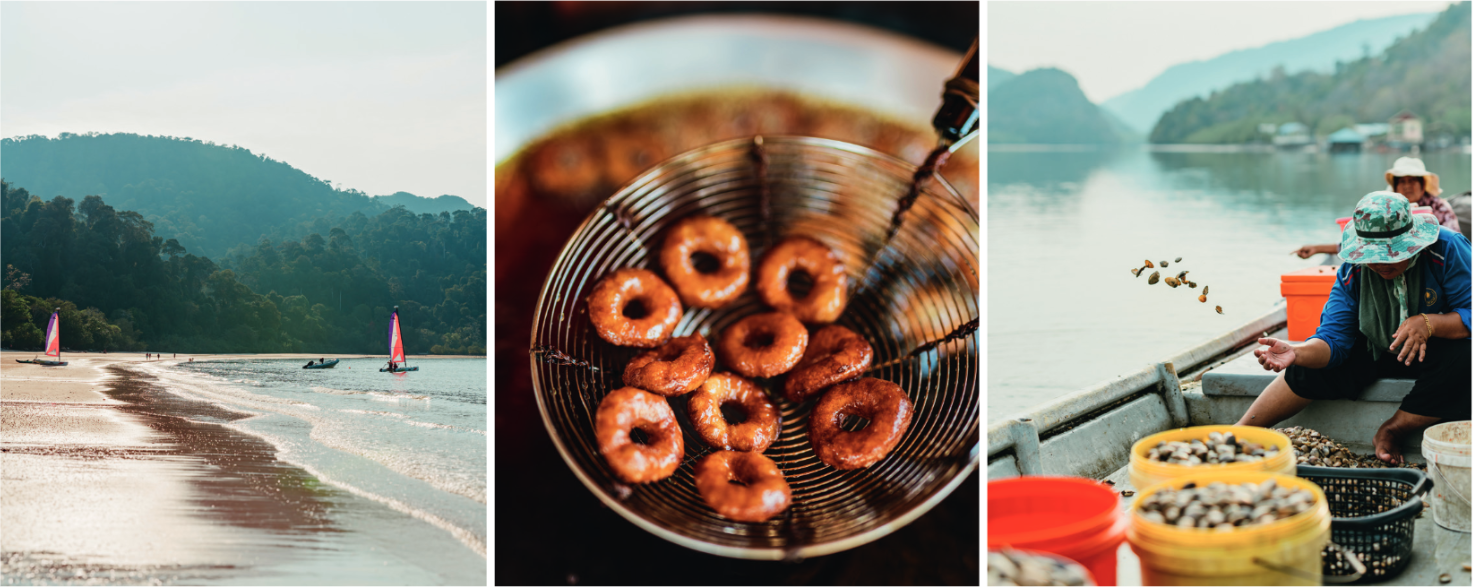
The raw materials, of course, are only half the story; the
ingredients might be local, but their uses reflect both Langkawi’s
position on the border of Malaysia and Thailand and also the
melting pot of Malaysian cuisine.
There’s a handful of stalls at the back of the market selling things like nasi lemak and roti canai flatbread but an alternative is lunch at Kuah Town Seafood, an 11-minute drive away. The restaurant is owned by Innleong Ng and his wife Tan Pat Heah. A photo in the window shows Tan standing proudly with Malaysia’s former prime minister, Kedah-born Mahathir Mohamad; this is not an unusual sight in a country where politicians command a level of celebrity that British MPs can only dream of. The restaurant’s walls are lined with Tan’s old school photos alongside blow-ups of Langkawi when it was a quiet backwater before Mahathir Mohamad transformed it into a travel destination in the Eighties.
Tan grew up in Langkawi in a family who had moved here from Thailand; Innleong’s family were originally from the Chinese province of Fujian, but he was raised in Perlis, Malaysia’s smallest state, in the far north-west of the country. The couple opened Kuah Town Seafood together nine years ago and, while the menu draws on their backgrounds, combining Thai and Chinese influences, it also reflects Malaysia’s majority Muslim community: 90 per cent of Langkawi’s population are Malay, with the remaining 10 per cent split between Chinese, Thai and Indian.
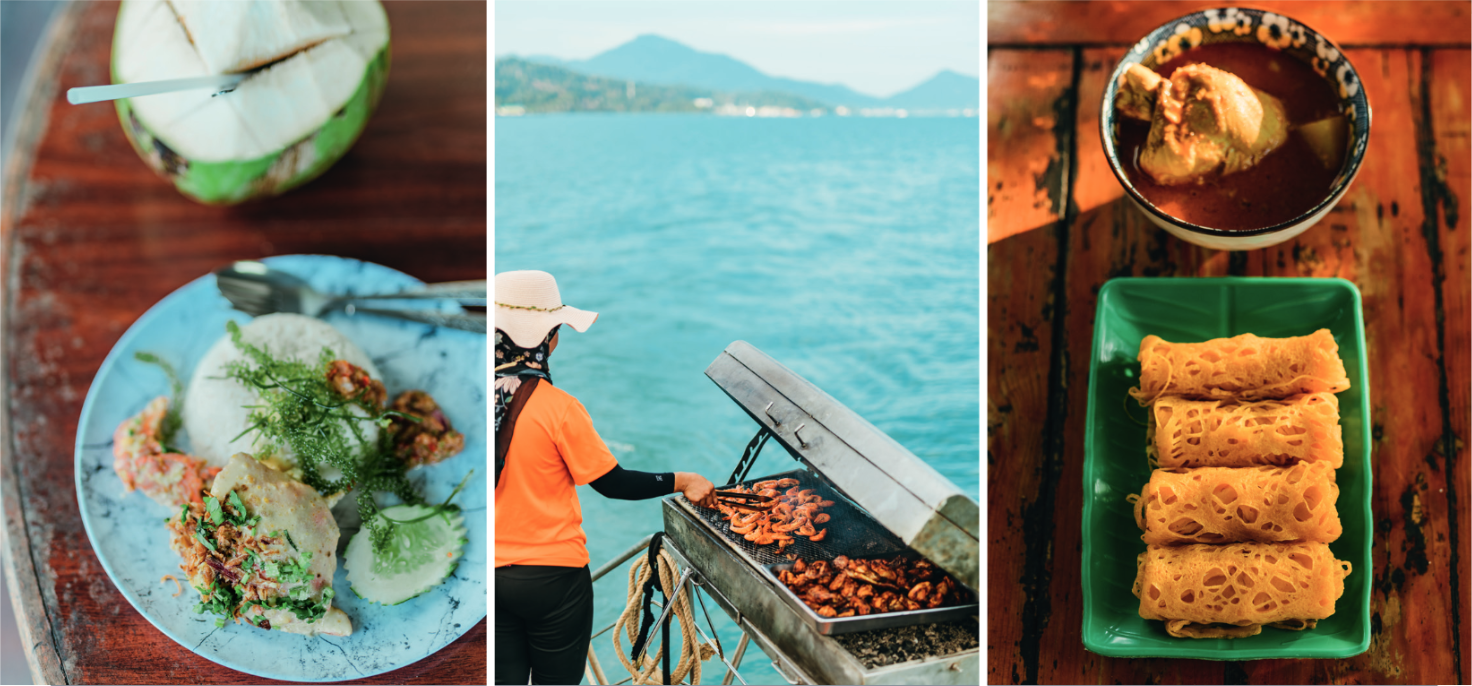
‘Until the Nineties, Chinese and Malay people would not mix in restaurants,’ Innleong says. ‘But now our menu is Muslim-friendly. We don’t have any pork; instead we have dishes like black-pepper chicken.’ But there is also Chinese-influenced morning glory, given the Langkawi treatment with belacan that takes Tan two days to make with chilli, onion and the dried shrimp, so that it tastes like fish-fragrant cabbage given a chilli kick. And there’s Thai-accented steamed squid cut into small rings, scattered with coriander in a limpid lime sauce that tastes sweet at first before the tiny Thai chillies ignite at the back of the throat and set the tongue ablaze.
Kuah’s main sites can be covered in an afternoon. The 138m-tall Maha Tower, a sort of Islamic-influenced mini Eiffel, offers views without the vertigo of the SkyCab. Eagle Square is the town’s premier Instagram opportunity, a 12m-high sculpture of the bird that gives the island its name: lang is the Malay word for eagle and kawi means reddish brown. But, really, this is a destination where it is far better to experience the real thing, and tours of the mangrove forests fringing the coast, or hikes around the three Unesco- designated geoparks offer ample opportunity for spotting not only eagles but the likes of long-tailed macaques, giant squirrels and over 500 species of butterfly.
An evening drive along the southern coast reveals water alight with a green glow that makes the horizon look like a swirl of Northern Lights, but is in fact a man-made phenomenon: the illumination is emitted by the lamps used by fishermen to attract squid. And, at 7am the next morning, The Danna Langkawi hotel’s executive chef Pari Subramaniam leads the way to see the boats come in; Pari moved to Langkawi at the end of 2023 from Kuala Lumpur and is keen to see for himself where the local produce comes from. ‘In Kuala Lumpur, there’s a lot of frozen fish,’ he says. ‘But here in Langkawi you can just see and taste the freshness.’
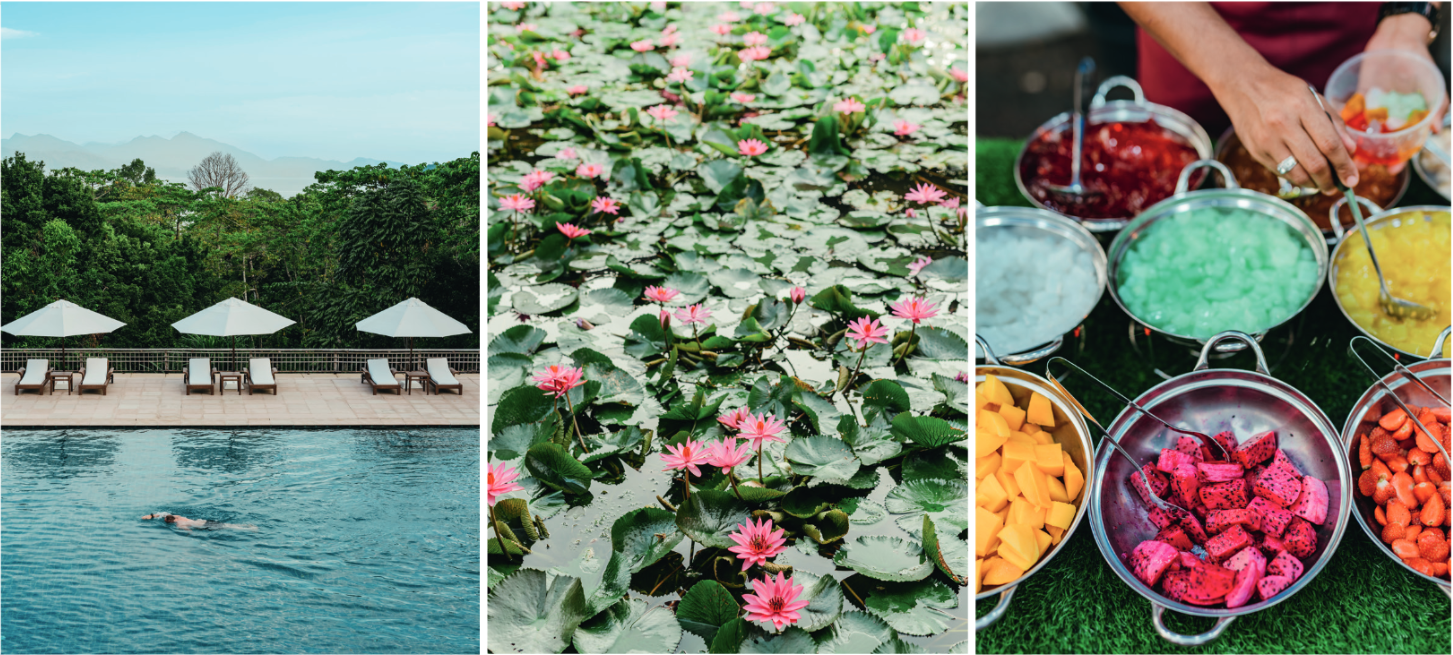
What might be expected to be a bustling fishing port is in fact a deserted beach off the main road back to Kuah, which will become a popular picnic spot come lunchtime. A cockerel sitting in a tree is trying to outdo the whooping call of an Asian koel for who can make the most noise at dawn. A crescent moon hangs above Gunung Mat Chinchang to the right but as a pink sunrise unfurls above the palm trees and the sky changes from inky blue to pearly white, it’s possible to make out a small red and blue boat slowly chugging across water that is as still as a lagoon. On board are Nazeri Hanafi and his wife Faezah Hamidin, who have been out since 9pm the night before.
Usually, they would bring back 60kg squid but low tide has meant last night’s haul is 30kg, which will get them 18 Ringgit, or around £3. Pari casts an approving eye over the catch. ‘The squid are quite small, which is good – the texture and flavour is better,’ he explains. ‘Fresh squid is juicy, whereas frozen squid can be chewy. I’d serve this with coconut milk, or stir-fried with dried chilli, although a side order of sambal is the most popular way to eat squid in Langkawi.’
The quality of the seafood isn’t the only difference Pari appreciates between Langkawi and Kuala Lumpur: the freshness of the herbs found here is key too. Back in the kitchen at the hotel, he points out water celery, Vietnamese coriander, turmeric leaf, lime leaf and lemongrass, which he buys from roadside stands each morning to marinate snapper, sea bass and mackerel before wrapping the fish in a banana leaf.
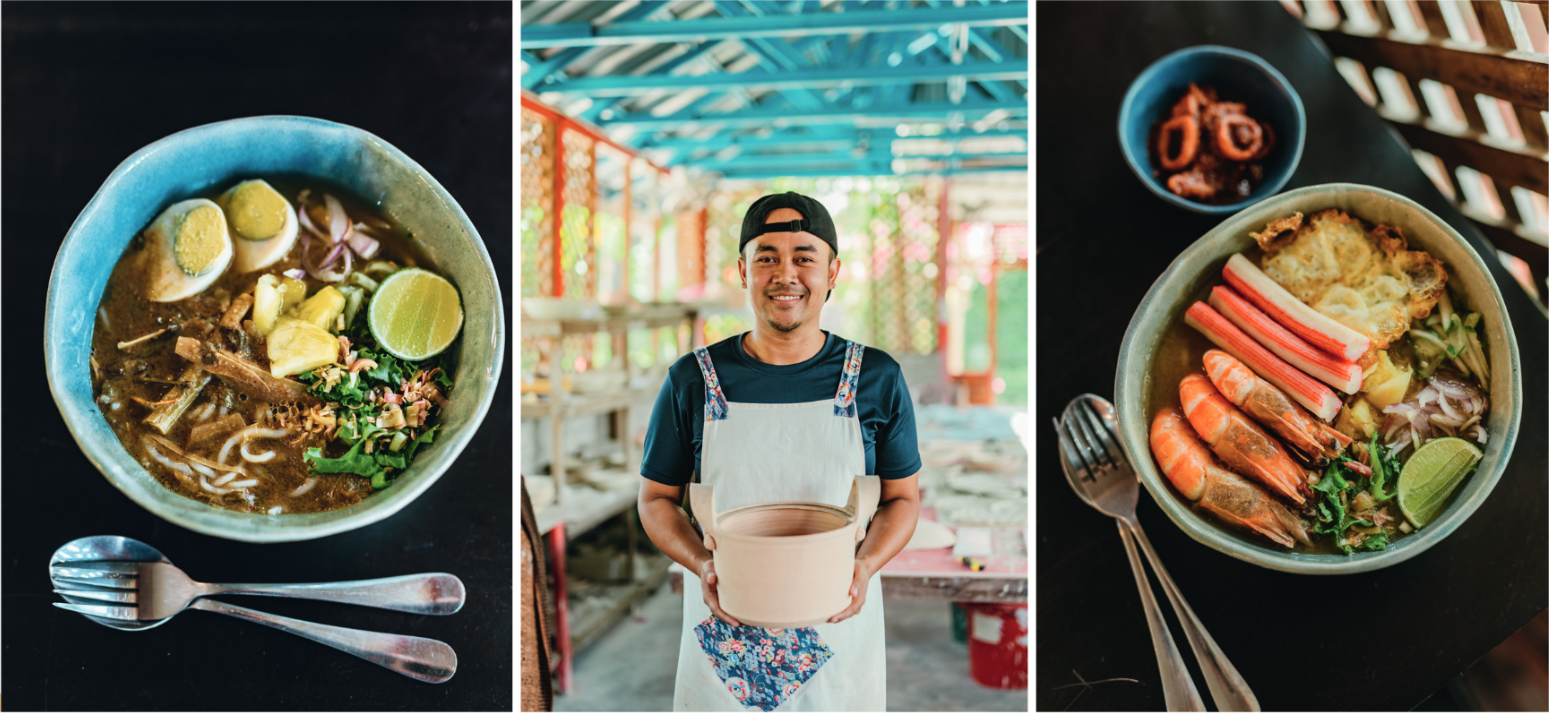
The following day, at organic farm Buluh and Tebing, comes the chance to have a go at pounding green and red chillies, onion, garlic, turmeric, ginger and lemongrass into a paste to be smeared on to tilapia fillets These are then wrapped in banana leaves, folded at each end as neatly as an envelope and left to sizzle on a griddle. The farm, owned by Ambong-Ambong resort, is in the foothills of Gunung Raya, Langkawi’s highest mountain, in the lush centre of the island. Half an hour earlier, farmers Jalal and Sadiq were standing by the edge of a fish pond fed by mountain streams: Sadiq casting a net but Jalal taking a quicker hands-on approach, reaching into the green shallows, grabbing a fish and brandishing it aloft as water dripped on his hair.
The farm was opened in March last year on a former smallholding of rubber plantation and paddy field and there are still some rubber trees dotted around the 6 hectares, including a 70-year-old specimen believed to be the oldest in Langkawi. Rice and rubber, however, are no longer the crop here; the organic farm produces 40 per cent of the fresh ingredients that end up on the tables of Ambong-Ambong’s two restaurants.
Spears of pineapple sprout out of the ground along with lemongrass so vividly fragrant it smells like citrus handwash. Sweet potato and yam are also grown to stir-fry with garlic, and butterflies flit among gladioli-like ginger flowers that will go into a sorbet. The only non-bucolic note is the electric fence to keep out the hungry monkeys, although they are more welcome at the hotel, where the surrounding forest rustles with the sound of macaques and more docile dusky leaf monkeys.
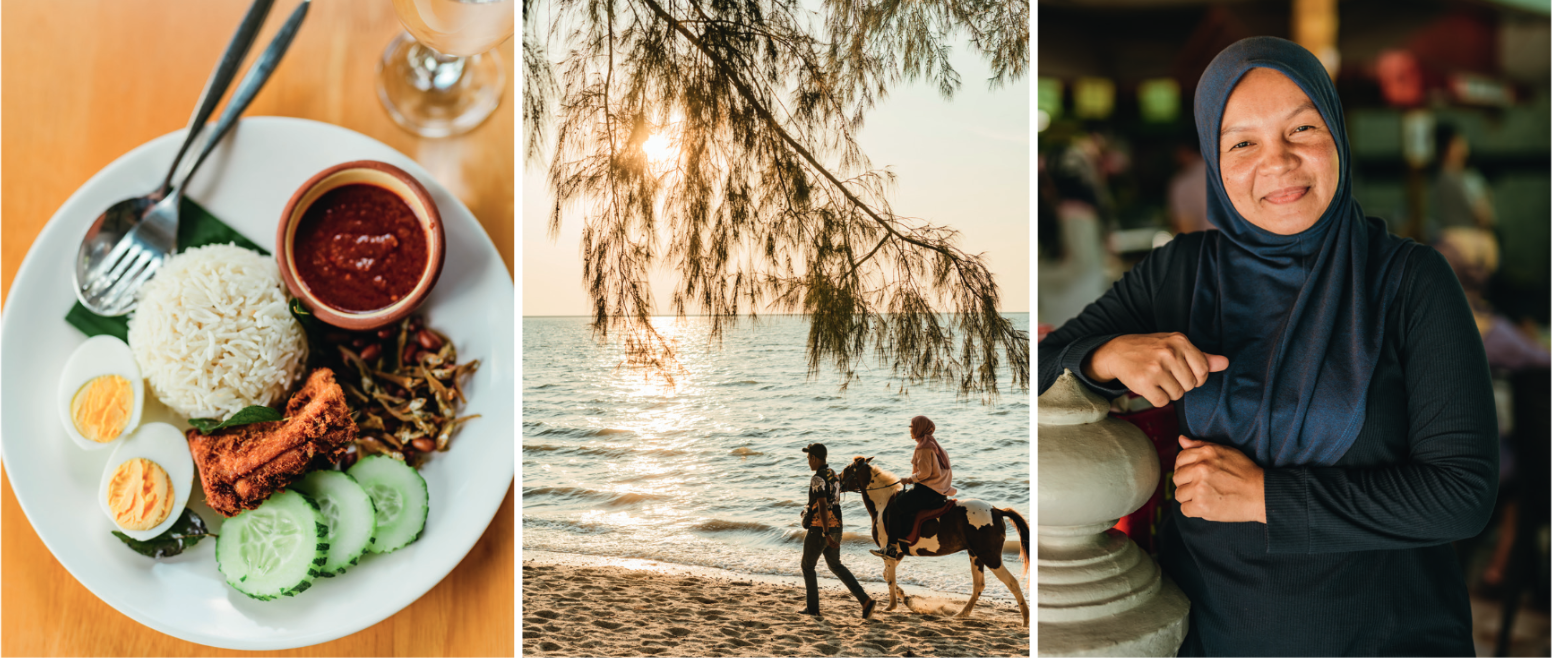
But fresh ingredients on Langkawi don’t just taste good; locals believe they do the body good too. At The Datai Langkawi hotel on the island’s remote northern coast, permaculture gardener Azrul Huzairy tends his zero-waste herb garden: curry leaf to prevent hair loss, water parsley to control blood sugar, dog fennel to repel mosquitoes and Cuban oregano to steep in water to relieve asthma.
If the medicinal value of herbs is one thing that makes Langkawi cuisine stand out, what else is specific to the island? ‘Malay cuisine is very straight-to-the-point in terms of the raw materials,’ says Jais Hussein, the chef at the hotel’s nationally renowned Gulai House restaurant, who grew up in Kedah on the mainland. ‘We use more fresh produce than dried herbs and spices. Our curries are lighter too – we call them gulai panas, which means they are cooked on the spot.’ So which dishes are uniquely from Langkawi? ‘Sea cucumber is something you will only find in Malay cuisine on Langkawi,’ he says. ‘It’s bigger than the Chinese equivalent.’ While it is traditionally prepared as a soup called sup gamat or a raw salad called kerabu bronok, Jais serves it instead with another Langkawi speciality, the edible algae called sea grape.
It’s certainly more appetising than the sea cucumber sold by Rusli Bin Ahmad, or Charlie to his friends, at the harbour on Pulau Tuba, where the ferry from Pulau Langkawi docks. He boils sea cucumbers in water with lemongrass, which he says is good for cleansing the body of toxins like cigarettes and alcohol, although it tastes not unlike a mouthful of sea water. The honey he makes from the tiny stingless black bees that nest high up in the island’s limestone outcrops is rather nicer – a hit of peach and lime to spoon on to a breakfast roti.
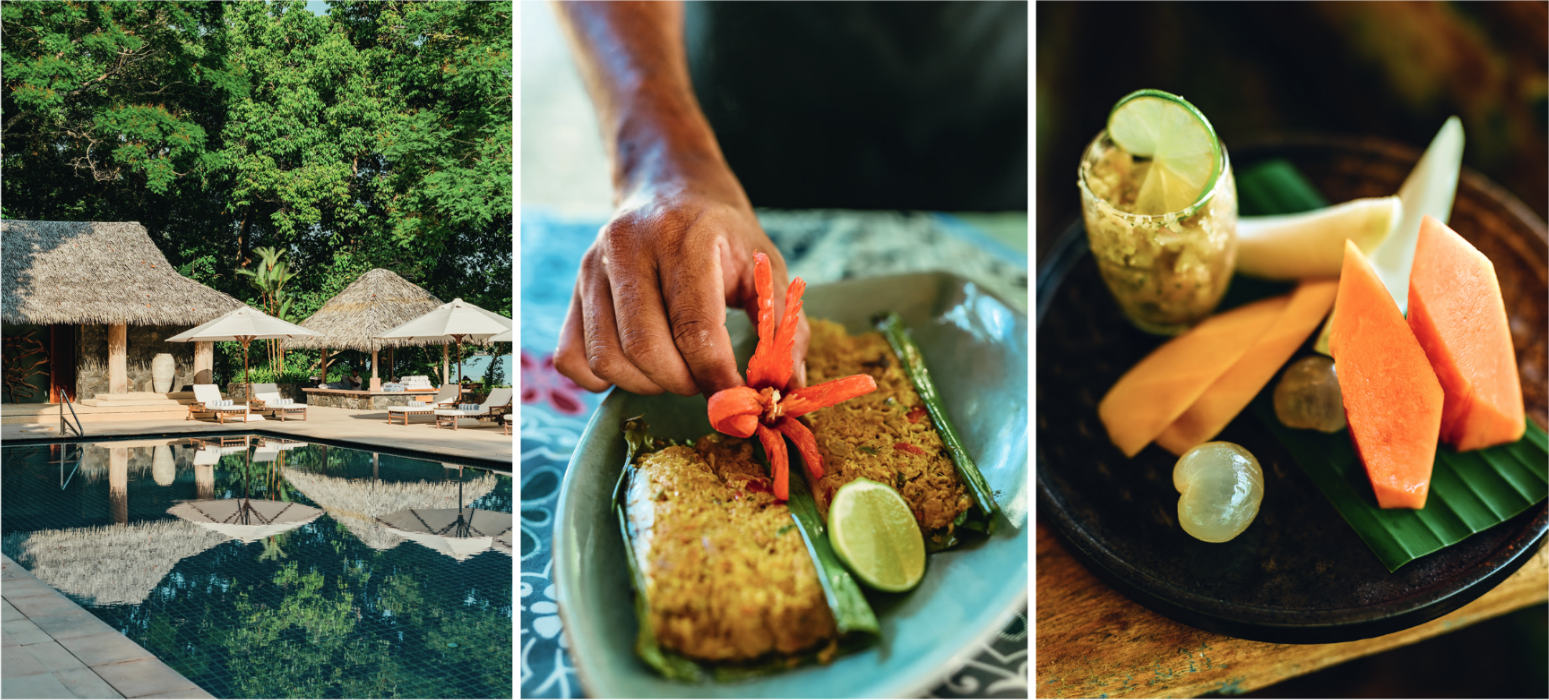
Charlie offers tours of Tuba and its neighbour Dayang Bunting island. While life on Langkawi could hardly be said to be fast- paced, things on these two smaller, less populated islands, linked by a narrow one-lane bridge, are even slower. Tuba used to be a farming and fishing community but the paddy field is now a meadow for grazing the water buffalo that would once have harvested the rice and are now reared for meat during Eid. Generally, the island’s youngsters would rather work in hotels than on the land or boats, but there are still families firmly attached to the old ways. Charlie’s squid fisherman friend Fazil sets out across the water, heading to a secluded bay between the two islands where a family are collecting siput gayam (Chinese Venus clams) by hand. Here, brothers Mahazir and Bakri dive under the water, filling up buckets with clams before handing them to their wives Hasnol and Fishah, who discard any empty shells and toss the rest into an empty Castrol GTI can.
As the current changes and the family moves on, the next stop is a pontoon where Fazil steams a bucket of squid in seawater until it turns pink, like skin fresh from a hot bath. He admits if he were eating this by himself on a night-time fishing trip, he’d probably accompany his feast with the convenience of Maggi instant noodles, but this time he produces a bucket of sweet- fleshed clams donated by Mahazir and his family instead. There might not be any sambal served on the side, but there is, simply, the thing Langkawi does best: a helping of the freshest ingredients eaten in a stunning natural setting.

Where to stay
Ambong Rainforest Retreat Very well located for the airport but nonetheless feeling utterly secluded in a canopy of tropical rainforest, Ambong’s guests are greeted with a back rub on arrival and excellent massages are available in a light-filled private treatment room too. In-house restaurant Pegaga is vegan while Rimba restaurant at sister hotel Ambong Pool Villas, a 10-minute walk away, serves meat and seafood and, like its villas, has uninterrupted sea views. Doubles from £115. Jalan Pantai Tengah, 00 60 4 955 8428, ambong-ambong.com
Bon Ton Resort There’s a laidback, communal, hippy-ish vibe to this collection of seven stilted villas housed in 100-year-old timber Malay houses, where guests will be best mates with the hotel’s other 18 residents in no time at all. Artists in residence might be a fabric designer or stand-up comedian, while the jazz bar plays hosts to cool bands up from KL. All profits go to the on-site animal sanctuary, which provides a home for the island’s abandoned dogs and cats. Doubles from £86. Jalan Pantai Cenang, 00 60 4 955 1688, bontonresort.com
The Danna Langkawi Close to Langkawi’s main attractions but with a location
on a sheltered bay (complete with sandy beach), one can do as little or as
much as one wishes at this cosseting member of Small Luxury Hotels of the
World. Children can be entrusted to the kids’ club, leaving grown-ups to flop
around the three-tiered infinity pool (Langkawi’s largest) before hitting the
buffets in Planter’s restaurant. High-ceilinged rooms are gathered around
a central courtyard filled with greenery and fishponds. Doubles from £318.
Telaga Harbour Park, Pantai Kok, 00 60 4 959 3288, thedanna.com
The Datai Langkawi An anticipated appearance on BBC’s Amazing Hotels this
autumn is likely to bring a new audience to this breathtaking property hidden
in a 100-million-year-old rainforest on Langkawi’s north coast. There are views
over to the Thai island of Ko Tarutao from its isolated beach, a perfect crescent
of white sand overseen by a phalanx of attentive staff bearing cocktails and
snacks. Wherever you stay at this 19ha self-contained, eco-minded retreat,
golf buggies are on hand to ferry guests up and down the steep slopes.
Doubles from £406. Jalan Teluk Datai, 00 60 4 950 0500, thedatai.com
Travel Information
Known as the ‘Jewel of Kedah’, the tropical island of Langkawi, part of the Langkawi archipelago, lies between the Andaman Sea to the north and the Strait of Malacca to the south, and has been designated a Unesco World Heritage Site for its rich biodiversity and lush jungle landscape. Time is eight hours ahead of GMT and currency is the Malaysian Ringgit.
GETTING THERE
Malaysia Airlines fly twice daily from London Heathrow to Kuala Lumpur
(13 hours 15 minutes) where you can to Langkawi. malaysiaairlines.com
Qatar Airways and Emirates fly to Kuala Lumpur via Doha and Dubai
respectively. qatarairways.com emirates.com
GETTING AROUND
Local taxis are the most popular mode of transport in Langkawi and are
widely available, although if you are travelling a lot, hiring a rental car at
the airport may be cheaper. Boats to the other islands depart from Kuah.
RESOURCES
Tourism Malaysia, the national tourism board, is a good resource for
information to help plan a trip. malaysia.travel
Where to eat

Prices are per person for a three-course meal, excluding drinks, unless stated otherwise
Dangau Langkawi Beautifully located among the paddy fields in the centre of the island (and with cool breezes on the first-floor terrace), husband-and-wife-run Dangau Langkawi serves traditional Malay dishes such as fish and seafood smeared with sambal or cooked in a light curry, helped along with heaps of salad. From £6. Lot 70, Mukim, Kampung Mawar, 00 60 12 431 8149
Gulai House The in-house restaurant of luxurious The Datai Langkawi is housed in a traditional Malay kampung, where soft lighting and (optional) floor seating suits the forest surrounds. Classic Malay cooking comes with contemporary presentation in the likes of the signature beef rendang made from slow-braised dried beef short ribs slow-cooked over fire. From £50. Jalan Teluk Datai, 00 60 4 950 0500, thedatai.com
Kapal Layar Restaurant Easily identifiable from the road that hugs Langkawi’s west coast by the fishing boat balanced on the restaurant’s roof, Kapal Layar serves fresh Langkawi seafood like steamed tiger prawns with garlic, ‘golden-spice’ mussels and, best of all, fried squid with salted egg yolk. Come for an early dinner: the sunsets are stunning. From £35. 2187 Telok Nibong, Jalan Pantai Kok, 00 60 12 295 1449
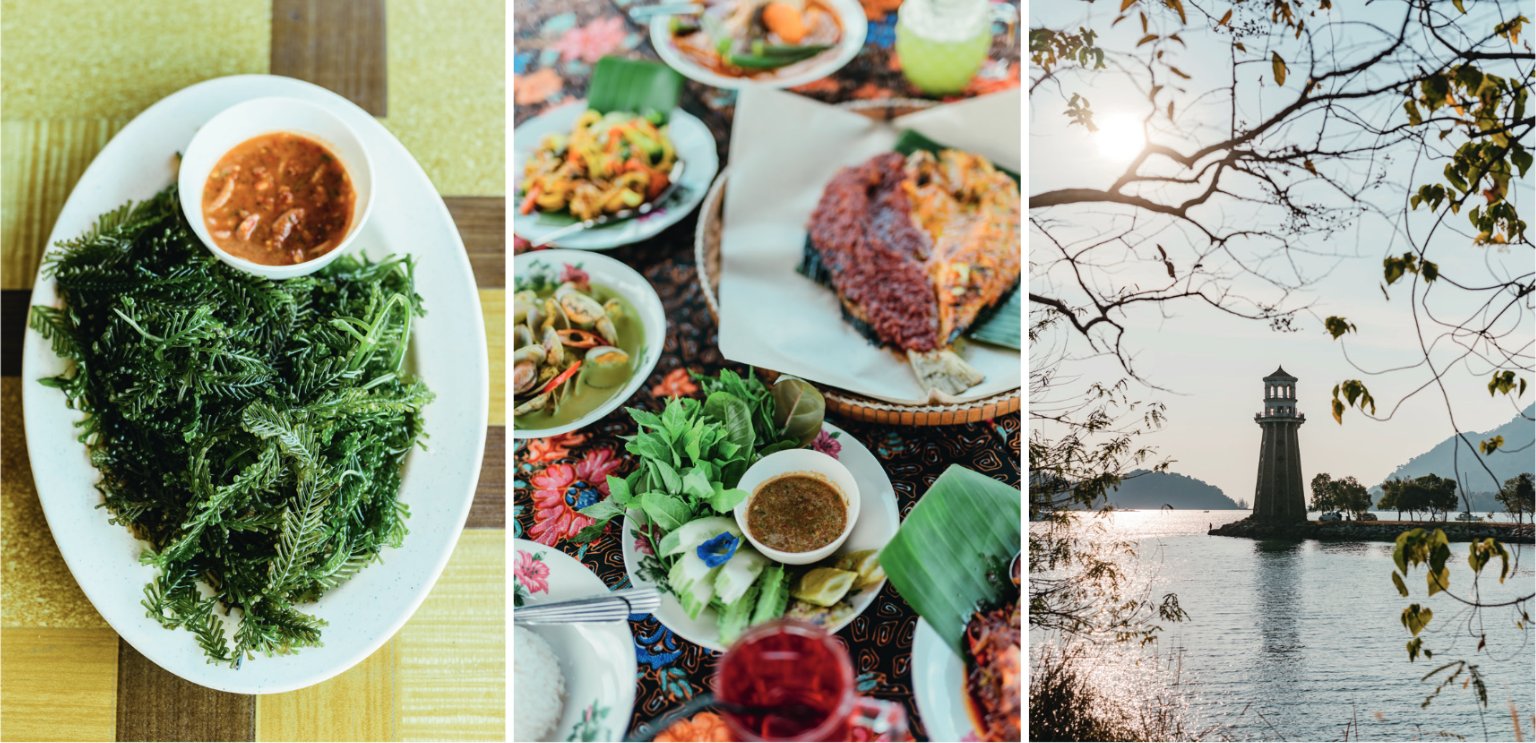
Kuah Town Seafood A menu mixing Thai, Chinese and Malay influences reflects both the family heritage of the owners but also the melting pot of Langkawi cuisine (not all of it seafood). From £4. 33 Persiaran Dayang, Pekan Rabu, Kuah, 00 60 12 472 2420
Kuah Town Night Market The twice weekly market in Langkawi’s capital offers a crash course in all-things Malay and more besides. Eat while grazing between stalls, or at the tables and chairs off to the side. Wednesdays and Saturdays, 4-10pm. Route 165, Kuah
Mee Udang Hasnah Melor Big bowls of slurpable noodles festooned with fresh prawns, squid and crab are the house speciality of this restaurant on stilts overlooking the narrow bridge that links Tuba and Dayang Bunting islands. Messy eating, but there’s a tap to wash one’s hands over the water. From £5. Selat Lubuk Chempedak, Pulau Tuba Satay Ann Satay is believed to originate from Java in Indonesia but is now equally synonymous with Malaysia. This street-food stand in Kuah serves three types of skewers – chicken, beef and lamb – grilled over charcoal to crusty perfection and dunked into peanut sauce simmered for two hours. Satay dishes from £2. 58 Persiaran Dayang 1, Taman Legenda, 00 60 19 655 2759

Siti Fatimah This favourite of Rick Stein serves a lunch buffet of around
70 fish and seafood salads and curries as well as the local (but rarely
seen) speciality of sup gamat, sea cucumber soup. From £4. Batu 5 1/4,
Jalan Kampung Tok Senik, Kampung Mata Air Mukim, 00 60 12 573 5227
Warung Sireh Pak Manap Breakfast is a bigger deal than lunch in Langkawi, a remnant of the days when locals would head out to work in the paddy fields before dawn. Few places do it better than this family-run café offering roti canai, nasi lemak and lacy roti jala pancakes, washed down with teh tarik. From £2. 64h, Kampung Pay
Food Glossary
- Belacan
- Fermented shrimp and salt paste, dried in the sun and sold in blocks that look like dark chocolate. A key ingredient in both nasi lemak (see below) and laksa
- Kerabu bronok
- Bronok is a type of sea cucumber with a texture like chewy squid and a lightly salty flavour and kerabu is a salad of raw vegetables (including onions) and coconut. The textures come together perfectly
- Nasi campur
- Simply meaning ‘mixed rice’ in Malay, this is also the term for the buffet restaurants found all over Malaysia offering a gargantuan amount of choice; the idea is that you add whatever you want to a plate of rice
- Nasi lemak
- Along with roti canai (see below), this is the staple breakfast dish of Malaysia, involving rice cooked in coconut milk and pandan leaf and often served with sambal, boiled egg, ikan bilis (dried anchovy), peanuts and fried chicken
- Sambal
- A sauce made from chillies, spices and herbs and pretty much any other fragrant ingredient that takes one’s fancy, eaten like a Malaysian chutney or condiment with most meals; nasi campur might be served with three or four sambals to enhance different dishes
- Sea grape
- Also called laktud locally, this is a type of seaweed that gets its name from the round leaves that pop in the mouth like caviar. Eaten raw in a salad or as an accompaniment to seafood
- Roti canai
- An Indian flatbread introduced to Malaysia in the 19th century and usually eaten with dhal for breakfast. Roti jala is a lacy pancake with similarly excellent dipping qualities
- Teh tarik
- Another Indian import, meaning ‘pulled tea’, in which tea and condensed milk are poured (pulled) from one pot to another to produce a frothy head; teh ais is the more refreshing iced version. It’s generally agreed Langkawi’s best is served at Restoran Haji Ali in Kuah
Get Premium access to all the latest content online
Subscribe and view full print editions online... Subscribe



